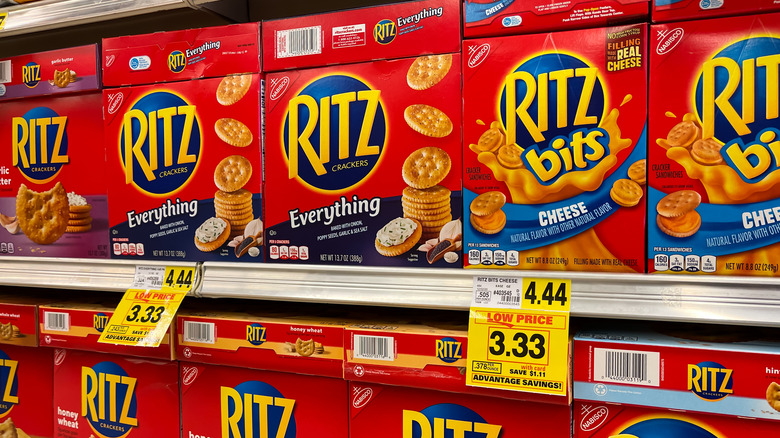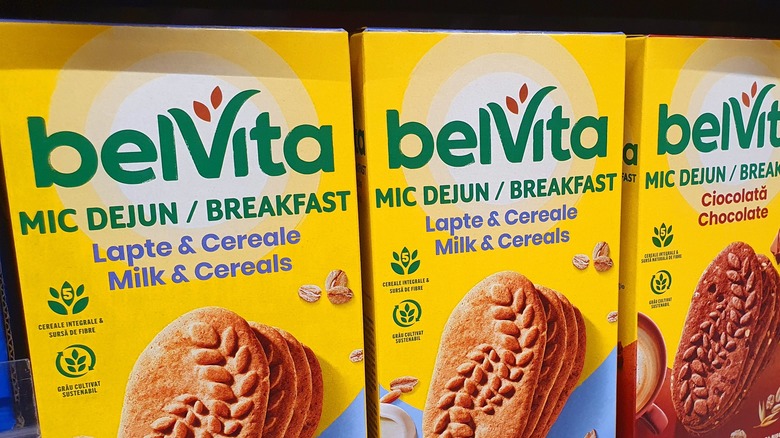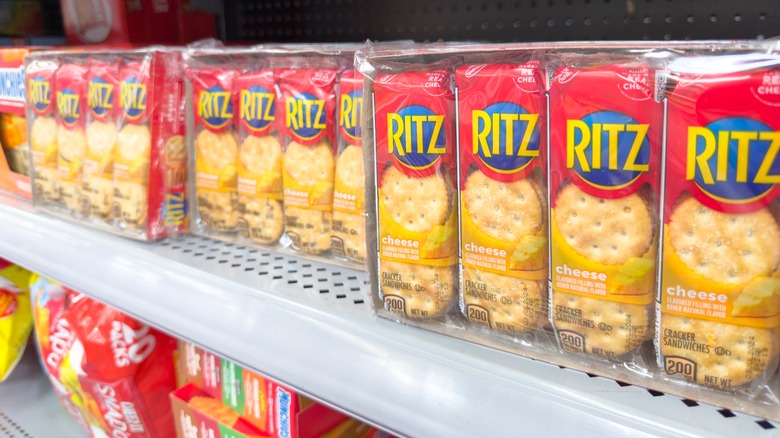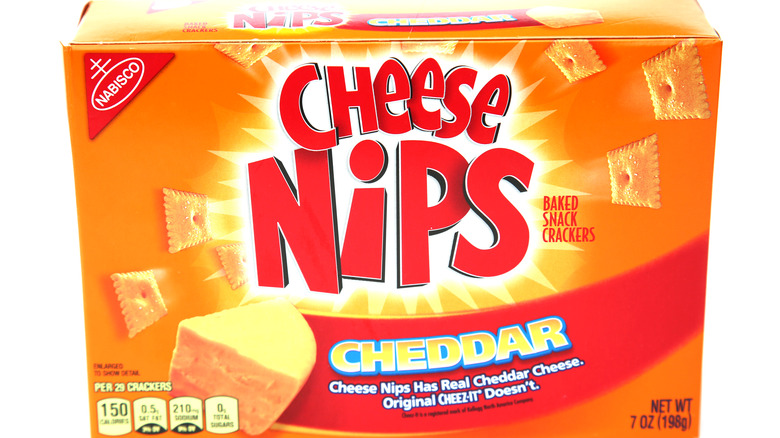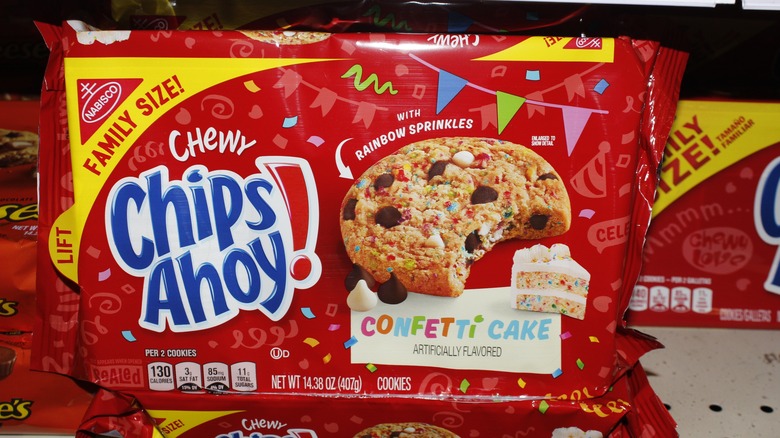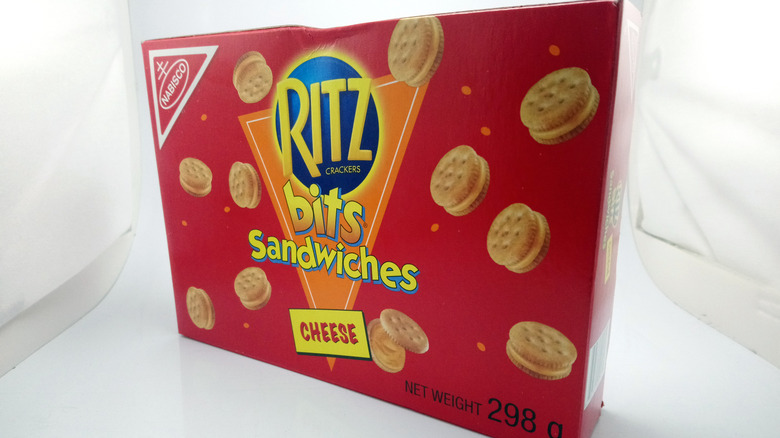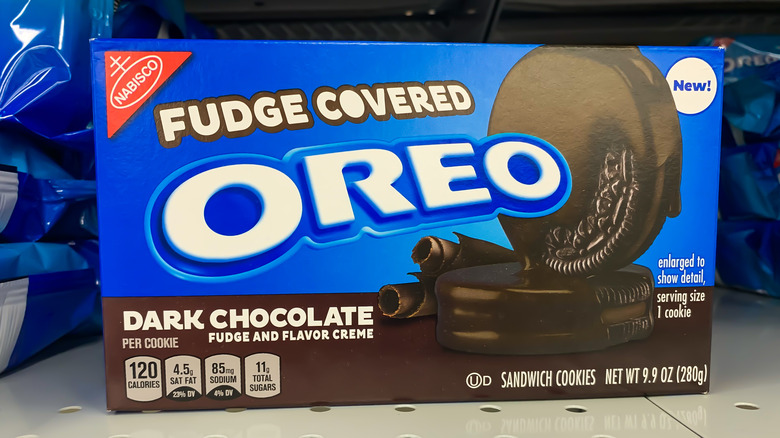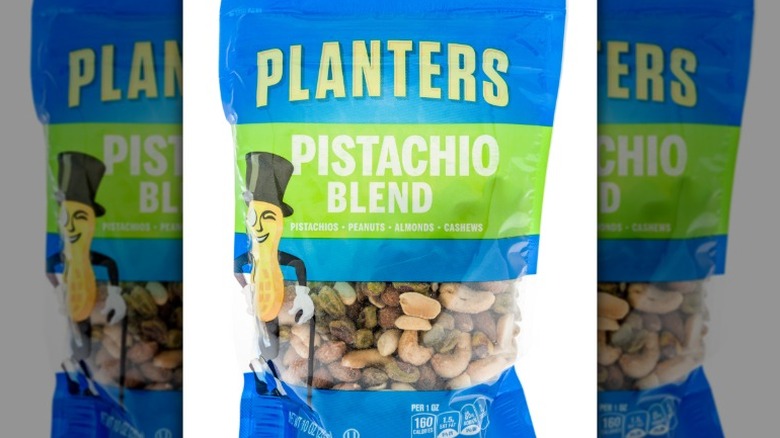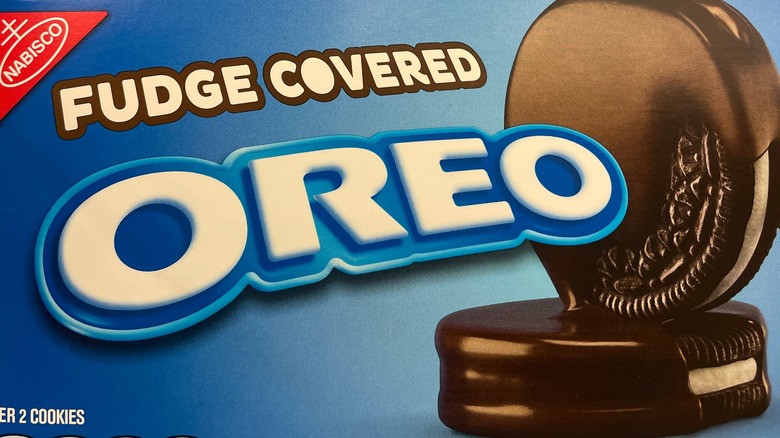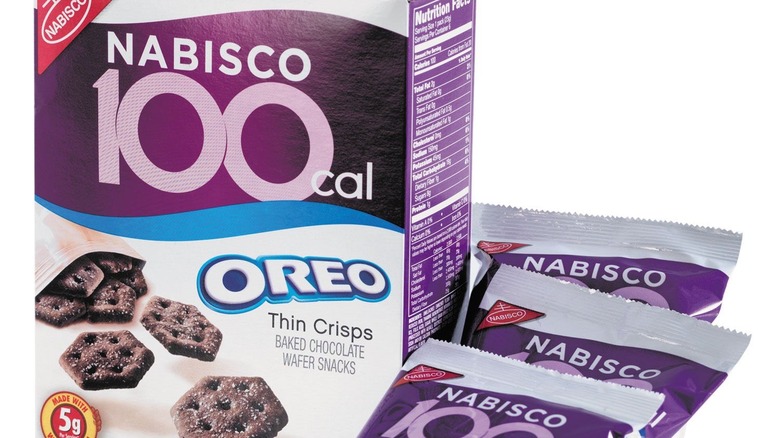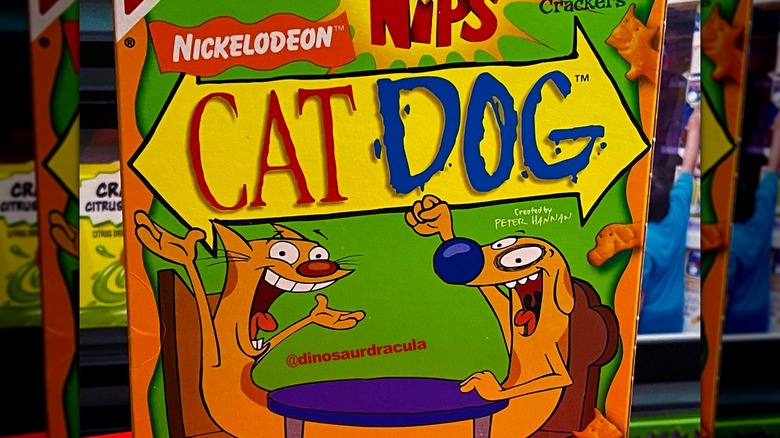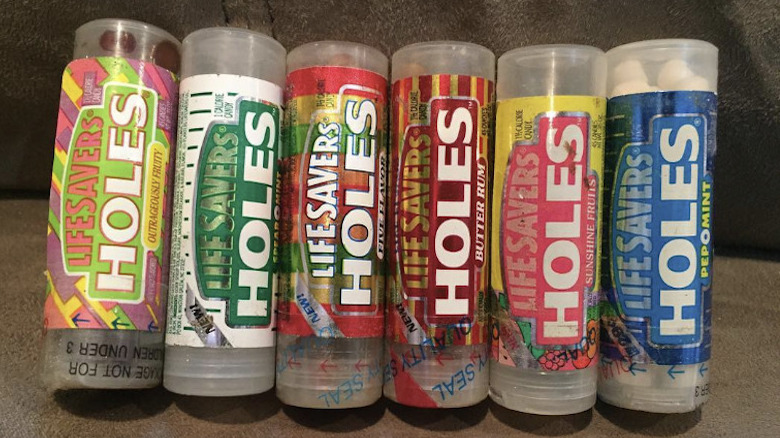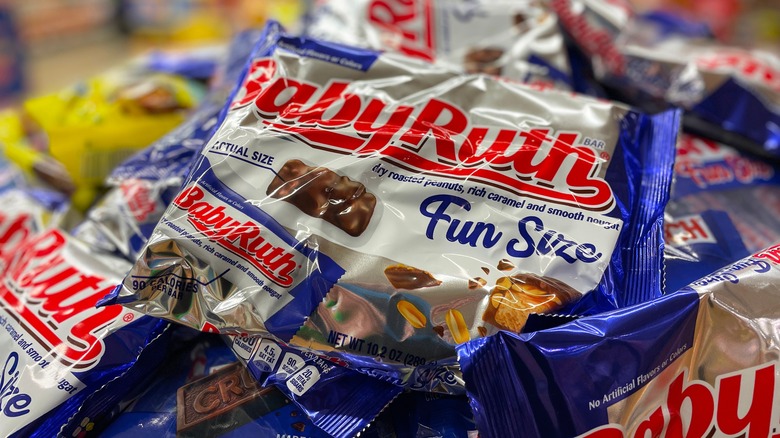Nabisco Recalls That Affected Millions
One of the oldest American food manufacturing companies still active in the 21st century, Nabisco began as the National Biscuit Company in 1898. Eventually smashing all those words together to get "Nabisco," the packaged foods maker also helped forge in practice and understanding the very idea of American food. Through ever evolving technological practices and savvy marketing, Nabisco brought dozens of shelf-stable, tasty, and definitive crackers, cereals, and cookies (also known as biscuits) to the pantry, table, and lunchbox. Among the many brands created and operated by Nabisco: Oreo, Ritz, Shredded Wheat, Triscuit, Wheat Thins, Teddy Grahams, Better Cheddars, Lorna Doone, Nilla, Premium, and Chips Ahoy!
When a company makes as much food and as many products as Nabisco does, and under various corporate parents including R.J. Reynolds, Kraft, and Mondelez International, that just increases the likelihood of disaster. Over its long history, and mostly within the last few decades, Nabisco has uncovered evidence of adulterated, contaminated, and potentially germ-riddled products that made their way to store shelves and customers' homes. And so, it did what other food companies did, and it asked for all of the tainted snacks to come back. Here are the most far-reaching recalls that Nabisco has ever had to initiate.
BelVita biscuits may have accidentally included peanuts (2023)
With its line of belVita biscuits, Nabisco tried to give customers a reason to pay more attention to the breakfast aisle and move out of its comfort zone of crackers and sugary cookies. Made from baked grains with fruit flavors, a belVita biscuit plays like a more wholesome and nutritionally valid Pop-Tart. But while it's marketed as healthy, those cookies are still subject to the kinds of problems in a food factory setting that can result in widespread problems that necessitate the need for a recall.
In 2023, three people contacted Nabisco, and its parent company Mondelez International, after they experienced an allergic reaction following the consumption of belVita products. All the subjects are diagnosed peanut allergy sufferers and they ate the cookies because there was nothing on the product's packaging that indicated that it was made with that common allergen making it highly likely that somehow nuts had contaminated a batch of belVita cookies. The recall covered two flavors of belVita Breakfast Sandwiches: the cinnamon and brown sugar with a vanilla creme center, and a plain sandwich with dark chocolate creme.
Ritz sandwiches were mislabeled (2020)
Launched in 1935, the round, scalloped, and buttery Ritz crackers turned into one of Nabisco's most enduring and lucrative lines. Ritz are made in a variety of sizes and permutations, including in snack packs of cracker sandwiches made with either cheese or peanut butter spread in the middle. In 2020, Nabisco's parent company Mondelez Global had to recall a large volume of Ritz Cracker Sandwiches packs because of a production error that led to a mix up of those two varieties. Some peanut-butter-based Ritz Cracker Sandwiches were accidentally packed into materials designed and marked for the cheese-based ones.
While it would probably amount to more than a minor inconvenience for most consumers — they bite into a cracker sandwich expecting cheese and they get peanut butter instead — this represented a potentially dangerous allergy trigger. Consumers with an allergy to peanuts could have unwittingly and unknowingly consumed peanuts without a proper warning on the label, because they thought they were eating the safe cheese ones. Seven different lots of Ritz Cheese Cracker Sandwiches Family Size were subject to recall, although no reports of accidental consumption and allergic reaction were reported to Nabisco.
Cheese Nips contained little bits of plastic (2020)
Cheese Nips, Nabisco's answer to the market dominant and top-ranked cheese cracker Cheez-Its, have been around since 1955. In 2019, the company by then in charge of Nabisco, Mondelez Global, ordered three lots of cheesy, tiny, rectangular Cheese Nips to be returned to the company. It would seem that not only were the little crackers infused with intense cheddar cheese flavor, but also some inedible, foreign matter that could cause internal injury if consumed.
Three lots of Cheese Nips sold in 11 ounce boxes with expiration dates of May 2020 were potentially packed and distributed with stray bits of plastic. A yellow dough scraper broke to some degree and what fell off during Cheese Nips production became incorporated into the product before it was baked. Officials at Mondelez Global noticed the plastic in a batch and ordered the recall, and apparently with enough advance notice that no one reported choking or eating the yellow plastic shavings that tainted their Cheese Nips.
There was a weird foreign body in Chips Ahoy! (2019)
Chips Ahoy! is one of the best supermarket chocolate chip cookie brands out there, and that's mainly because they're solidly constructed. Thick, weighty, and full of chocolate chunks, even the chewier style can withstand a dip in milk without falling apart. But in 2019, Nabisco produced a sizable amount of Chips Ahoy! Chewy style cookies that were so unnaturally substantial and chunky that the baked goods company had to order a recall. Four different lots, as determined by differing expiration dates on the packaging, were withdrawn from the market by Nabisco's head company Mondelez Global due to the presence of a substance that shouldn't have been anywhere near a Chips Ahoy! cookie.
What it was, exactly: Mondelez Global and Nabisco wouldn't say, only that the cause for the speedy recall of 13 ounce packages of one of its most familiar brands was "an unexpected solidified ingredient" in the treats, according to the FDA. The company did disclose that the investigation and voluntary recall took place after it received complaints about Chips Ahoy! eaters getting sick, but it didn't give any specifics on the illnesses.
Ritz crackers contained an ingredient exposed to salmonella (2019)
Under the Ritz brand header, Nabisco produces many different snack items. The foundational Ritz cracker can so easily be flavored, resized, and used to make small sandwiches that it graces a multitude of products. To make all those varieties of non-standard Ritz, Nabisco has to contract with industrial food suppliers for the necessary additives, such as whey powder, a dairy derivative that adds protein, creaminess, and texture to foods.
In July 2019, Nabisco discovered that the whey it had used to mass produce multiple lines of Ritz products had possibly been contaminated with salmonella, a germ that can lead to painful cases of food-borne illness. It can be more serious or even fatal for children, older adults, and the immune compromised. No illnesses had been reported to Nabisco before it put its recall together, so it was done out of a concern for public health risk and to prevent anyone from eating potentially infected foods. Altogether, 16 products were recalled, all determined to have been produced in a particular period that gave them expiration dates of early 2019. Among the products taken back by Nabisco: Ritz Bits Cheese, Ritz Cheese Cracker Sandwiches, Ritz Bacon Cracker Sandwiches with Cheese, Ritz Whole Wheat Cracker Sandwiches with White Cheddar Cheese, and Ritz Everything Cracker Sandwiches with Cream Cheese.
Oreos were mislabeled and contained an allergen (2016)
Arguably Nabisco's flagship product and probably its best known individual contribution to the world of food, the Oreo has been a pantry staple for more than 100 years. Nabisco markets Oreo as one half of a classic snack combination, putting it right there on the packaging that the Oreo is "Milk's favorite cookie." Being a vegan can be very expensive, but relatively cheap Oreo cookies may qualify for that lifestyle and diet, as the sweet sandwiches aren't made with animal products.
This means that Oreos are probably safe to eat not only for vegans, but for people with an allergy to dairy products. This made for a massive problem in 2016 when Oreo produced and distributed thousands of boxes of Oreo cookies without noting on the label that they contained a trace amount of milk. Even a small amount of dairy could trigger an allergic reaction if unknowingly consumed, so Nabisco needed to urgently recall 13 total lots of two kinds of Oreo Fudge Creme cookies, part of the wonderful world of novelty Oreos, both in the original flavor and the mint.
Various nut-based products may have carried salmonella bacteria (2009)
In the 2000s, Planters, makers of nuts and a vast assortment of nut-based products and snacks, was owned and operated by Standard Brands, which in turn was a division of Nabisco. It was thus the responsibility of Nabisco to pursue a recall on several Planters affiliated products in 2009 due to a tainted pistachio crop.
Setton Farms is an industrial nut supplier to many major food companies, including Nabisco. It harvested about 55 million pounds of pistachios in 2008, but early the next year, it recalled about 2 million pounds across two separate actions. The nuts were potentially laced with salmonella, a food-borne bacteria that can lead to fever, diarrhea, vomiting, and abdominal pain if infected food is consumed. Nabisco, and its parent company at the time, Kraft, recalled multiple snack and trail mixes made with Setton-grown pistachios, as well as Planters-branded dry roasted pistachios. Before the outbreak could be contained, about 700 people in 46 states fell ill after eating the compromised nuts.
Fudge-covered Oreos were inadvertently filled with peanut butter creme (2005)
Per the Food Allergen Labeling and Consumer Protection Act of 2004, it's a legal requirement for food manufacturers to disclose on the packaging of a product if it contains any of the eight most prominent allergens, including, milk, egg, fish, shellfish, wheat, soybeans, tree nuts, and peanuts. Having such information about dangerous ingredients so readily available helps those who suffer from particular allergens know at a glance if a food is safe to eat or not. In 2005, not long after the potentially life-saving food labeling law went into effect, Nabisco recalled millions of Oreo cookies because a production error led to product containing a moderate amount of peanuts was placed into packaging without a "contains nuts" warning on the label — and it was a food that by its very nature, made it difficult to tell what was inside.
The recall concerned 838,000 boxes of Oreos covered in chocolate. On the items in question, the package promised Pure Milk Chocolate Covered Oreo Sandwich Cookies inside. What were actually in the recalled bags: Pure Milk Chocolate Covered Oreo Sandwich Cookies with a peanut butter-flavored creme filling. Rather than risk someone with a peanut allergy eating a cookie they didn't know had peanuts in it, Nabisco set out on its biggest Oreo recall ever.
Two rounds of individually portioned cookies were mislabeled (2004)
Nabisco offers Oreo cookies in a number of sizes and packaging styles, including bite-size Mini Oreos in individually-portioned bags designed to fit into lunch bags, backpacks, and purses. Nabisco sold these under the name "Carry Me Packs" in the 2000s, and the line included other famous, miniaturized brands made by the baker, including Ritz Bits sandwiches. In 2004, Nabisco recalled — from BJ's Wholesale Club stores in 16 states — 195,000 boxes of "Carry Me Packs" of what the packaging claimed to contain Mini Oreos. Instead, they contained a handful of Ritz Bits Cheese Sandwiches. More than just a mildly irritating case of a product switcheroo, the error could have led to health problems. Ritz Bits Cheese Sandwiches are made with dairy products, a common allergen. Oreo cookies are not made with milk, and as the packs lacked a warning about the use of dairy, consumers with an allergy to that element could have suffered a serious reaction had they eaten the Ritz Bits.
Also in the summer of 2024, Nabisco put into the works a separate recall for a similar case with the same underlying cause. Nabisco recalled a total of 586 pounds of 100 Calorie Packs of Oreo Thin Crisps because some packs contained Chips Ahoy! cookies — which contain milk, and that wasn't noted on the label.
Cribbing from the cracker competition lead to a lawsuit and a recall (1998)
Goldfish Crackers taste good, and they're extremely popular. In 1998, Nabisco tried to home in on the market that rival packaged baked goods company Pepperidge Farm had established and cornered and announced its own small, cheese-flavored, animal-shaped crackers. Produced as a tie-in with the Nickelodeon animated series "CatDog," Nabisco planned to release Cheese Nips CatDog crackers, and among the shapes used was a fish. Pepperidge Farm promptly sued Nabisco, accusing it of running afoul of its trademark on fish crackers and deliberately trying to confuse consumers into thinking they would be buying the better-known Goldfish brand. The company asked the court to help it force the exclusion of that one style in the Cheese Nips CatDog crackers, but Nabisco refused, and began production of the crackers as they'd initially intended. It also filed a countersuit in early 1999 to secure the legal right to sell its slightly different looking fish crackers.
Nabisco ultimately lost the case. A U.S. District Court judge in New York sided with Pepperidge Farm, ruling that Nabisco had violated the trademark. As part of the settlement, Nabisco was allowed to keep making Cheese Nips CatDog crackers, but without the fish ones, and to recall all packages featuring them that it had already distributed.
Life Savers Holes made kids choke, and so they were recalled (1991)
Ranking behind only doughnuts, Life Savers are the second-most famous ring-shaped sweet treat with a hole inside. Invented in 1912, it took the makers of the ubiquitous hard candy rolls nearly 80 years to come out with its version of the doughnut hole: Life Savers Holes. The colorful, pebble-sized candies made their debut in the early 1990s in mint, and in varieties of fruit flavors all mingling about in one container: a plastic tube stuffed with dozens of pieces.
Not long after the product's introduction, Life Savers Holes producer Nabisco issued a voluntary recall in 1991. The reason: The plastic container used to dispense the candy presented a substantial choking hazard. Nabisco had received a few reports that the small plastic cap that kept the tube closed easily broke off, particularly when it was in use, and four children accidentally bit them off, chewed, and swallowed the material, or they nearly choked on them. No complaints of serious medical issues or internal injuries surfaced, but after the recall, Nabisco sought to prevent history repeating and altered the design of the Life Savers Holes tube.
Contaminated Baby Ruth bars were ordered back (1986)
Initially called the Kandy Kake, the bar with chocolate, nougat, peanuts, and caramel and known as Baby Ruth, has had a lot of different makers since its debut in 1916. Standard Brands bought creator Curtiss Candy Company in 1964, and in 1981, Nabisco bought Standard and quickly focused some innovative marketing efforts on the Baby Ruth, already a very old candy. Not long after paying $100,000 for a product placement in the 1985 film "The Goonies," Nabisco suffered a public relations disaster that threatened its investment in Baby Ruth.
Following scattered complaints to Nabisco in late 1986 from customers who reportedly ate Baby Ruth bars and contracted food-borne illness caused by salmonella bacteria — which manifests in diarrhea, vomiting, and stomach cramps — the company ordered a partial recall. After the discovery of salmonella at a factory in Franklin Park, Illinois, Nabisco asked for the return of five batches produced between October 27 and November 4. More tests at an FDA lab indicated the germs were present for a larger window of production time — October 6 to November 6 — prompting Nabisco to call for a precautionary retail on the nation's entire stock of Baby Ruth bars of all sizes in December 1986. As there were no further reports of illness, Nabisco recalled the candy before it could lead to an epidemic of salmonella infection.
